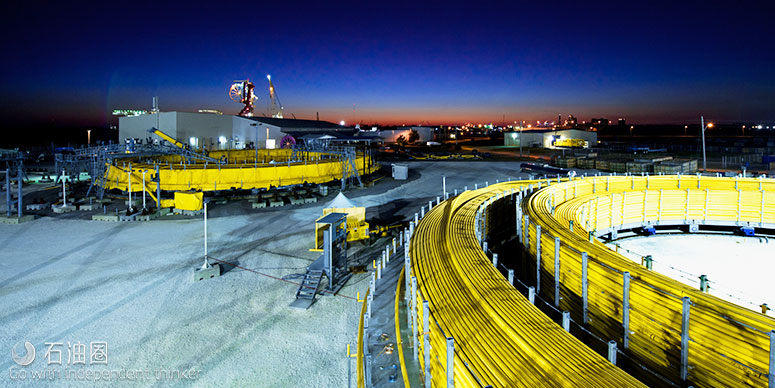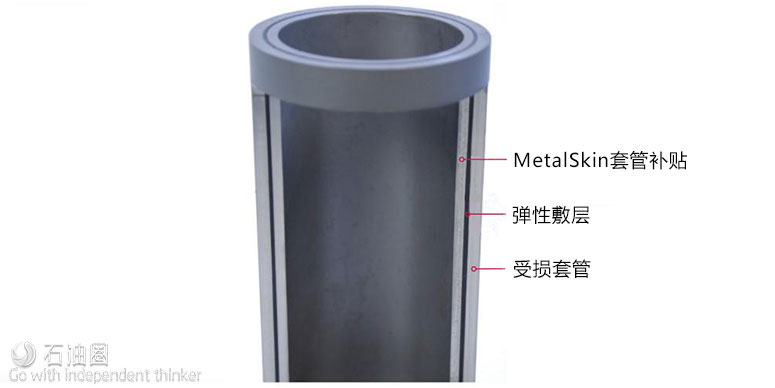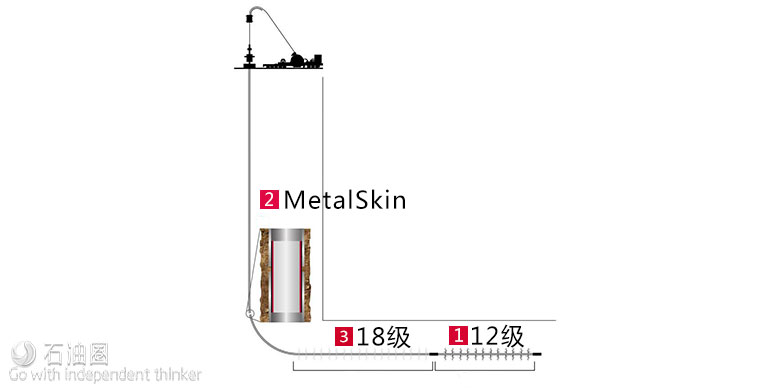Coiled Tubing-deployed Liner System Enables Efficient Repair Of Parted Pipe
An operator completing a natural gas well in the Marcellus Shale of northeastern Pennsylvania encountered a casing integrity problem during the 12th stage in a planned 30-stage fracturing operation. Loss of wellbore integrity, which the operator suspected was caused by a leaking connection in the heel of the well, prevented completion of the remaining 18 stages.
The operator needed a solution that would resolve the problem under tight time constraints. The solution also would have to reliably withstand pumping pressures of more than 10,000 psi.
The operator initially considered bringing in a workover rig. However, because the work site was on a mountainside with a limited footprint, accommodating a workover rig would require moving the existing equipment offsite during intervention operations and remobilizing the fracture spread after the intervention. Because of time constraints coupled with logistical challenges and rig rental costs, the operator ultimately decided against the prospect of a workover rig.
The operator also considered running a cement squeeze to isolate the exposed section of the wellbore. However, the time required to pump cement, let it set, drill it out and test the barrier would have taken too long. There was also little guarantee that the squeeze would reliably hold the 10,000 psi during pumping.
Novel approach
In light of these challenges, the operator investigated the possibility of deploying a wellbore integrity restoration technology on coiled tubing (CT) and asked Weatherford for assistance. Compared to deploying a casing repair solution on a jointed tubing string via a workover rig, a CT deployment significantly shortens operational time. The continuous CT string can be run in-hole relatively quickly without stopping to make or break connections. Once the repair solution is installed, the CT is then tripped out just as quickly. In addition, a CT unit requires a much smaller footprint than a workover rig, meaning that it can be brought onsite with less maneuvering or moving of pumps, trucks or other equipment at the well site.
Weatherford first deployed a wireline crew to run a caliper log. The log confirmed that a connection leak was the root cause, as previously suspected. The installation was performed in a live well with 4,000 psi wellhead pressure, which required a lubricator to be used for pressure isolation.
Working closely with the operator, the service company’s engineers designed a high-pressure (HP) casing repair procedure that would accommodate the lubricator on location for pressure control. The procedure also would have to facilitate deployment on CT while enhancing equipment integrity and personnel safety at the site.
The operator and service provider selected a 4.25-in. by 5.5-in. MetalSkin cased-hole HP liner system to regain casing integrity in the parted pipe. The system provides permanent isolation using a robust liner, or clad, that seals and isolates damaged casing or perforations. Unlike shortterm repairs such as cement squeezes, this solid-tubular expandable system is designed to be highly reliable and eliminates the need for repeated workover operations.
The cased-hole liner system also provides minimal reduction to the inner diameter (ID) compared to isolation straddles or conventional liners. The larger ID enables easier access for future drilling, completions, production or injection operations and maximizes production rates. The system is installed in one trip and does not require any cement or drillouts.
The liner system was engineered to withstand the high well pressures and provide enhanced burst and collapse resistance. A solid elastomer coated the length of the expandable liner to fill the narrow gap between the expanded liner and the pipe wall. This compressible material results in cladding of the liner to the casing, which provides support between the two pieces of pipe and thereby increases the pressure resistance of the liner.
Running the job
While the system is typically installed using a workover rig, adapting the system for deployment on CT enabled the service provider to meet the tight time constraints and pressure requirements for this 10,000-psi fracturing job. The service provider and operator worked closely to ensure that the expandable liner system and lubricator were safely made up on the CT string prior to deployment in the well.
The cased-hole liner system and lubricator had a combined length of more than 36.5 m (120 ft) at the surface. To avoid damage to the expandable liner system while picking up, knuckle joints were installed into the string. The joints are designed to bend while picking up and moving the expandable liner into position over the well.
The crew made up the lubricator to the wellhead and ran the CT with the expandable liner assembly to depth. Hydraulic pressure was applied from the surface to activate the expansion tool, initiate expansion and then set the anchor. Subsequent hydraulic cycles completed the expansion process through the entire length of the liner. This setting option made the MetalSkin system better suited to the job than other expandable liner systems that are activated by darts or balls. Because there are no jointed connections in CT, a dart would have to be run in place before heading downhole, complicating the operation and eliminating any possibility of circulating the well.
While setting the liner, the wellhead pressure dropped to 2,500 psi, which confirmed that the expandable liner had fully isolated the parted section. Once the liner was fully expanded, the residual pressure was bled off, and the assembly was pulled out of hole. The cladded section of the well was successfully pressure-tested to 10,000 psi for 30 minutes, confirming that well integrity had been restored.
The deployment of the expandable liner system on CT was quick and efficient. The cleanout/drift run, installation and pressure testing was completed in 24 hours. The expandable liner system did not require drilling out, which enabled fracturing operations to resume as soon as the CT unit was moved off of the well. The remaining 18 stages were completed using the plug-and-perf method, and the crew completed the well two days earlier than planned despite delays caused by the parted pipe. Ultimately, the successful completion ensured that the well would produce to its original full potential.
Expanding the application
In another recent application, an operator in Alaska ran a multijoint expandable liner system on CT in a remote multilateral well. With multiple successful applications the deployment of this expandable liner system on CT is a routine and reliable operation.

 石油圈
石油圈


